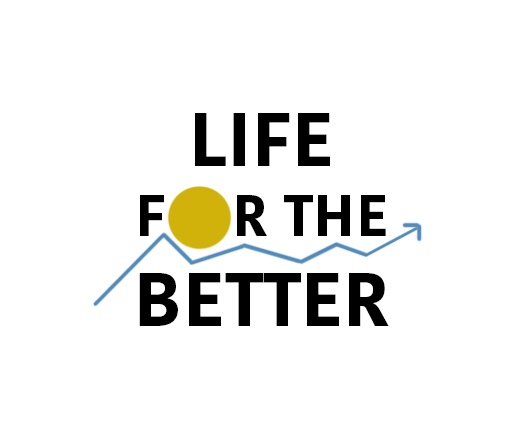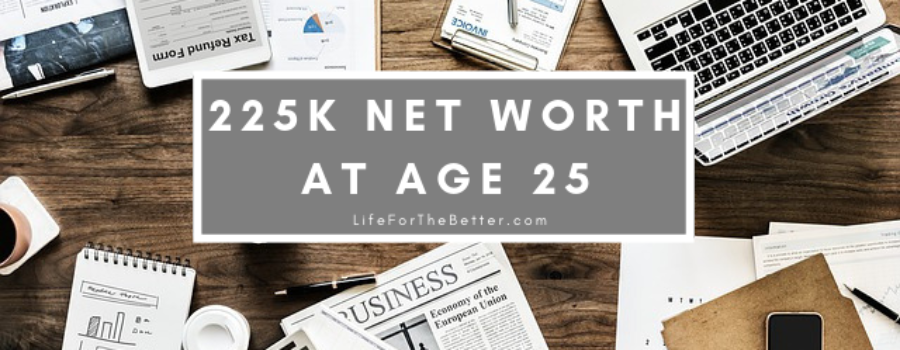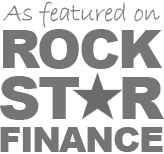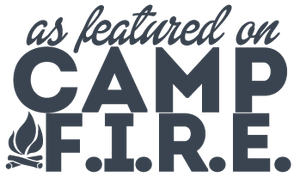
When I was just joining the Air National Guard at age 17, my dad told me to save $30,000 by age 30. Using this as a rule of thumb, I’d be a millionaire by retirement. That means I would have 13 years to save $30,000 or just over $2,300 a year or $192 a month – without compounding interest.
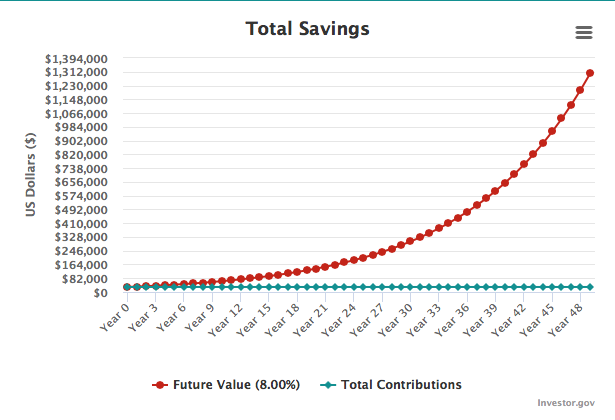
High School
I started working at the age of 14. I worked after school at a local grocery store bagging groceries, pushing in carts, stocking shelves, and eventually a cashier.
After going to a full day of class, I would go home, put on my uniform, and then go to work. This meant I would need to find time for homework, friends, and sports. Nothing too cosmic for a high school student, but what this taught me at a young age was hard work, time management, and how to handle money.
During my senior year of high school, I enlisted in the Air National Guard. I graduated from high school and shortly thereafter went to basic training. Here is where I had a steady paycheck coming in every 1st and 15th of the month.
With little to no expense except a vehicle, insurance, phone, and a few other expenses. I started to save the paycheck coming in. What else is an E-3 making roughly $35,000 a year going to spend their money on?
Investments
I always heard the term “save 10% of your income for retirement.” So, I put that towards my Thrift Savings Plan. This closely resembles a 401(k) in the civilian world. Slowly over time, I’ve increased my savings rate from 10% to 60-70%.
I started to see my bank account grow and started learning more about investing and finances. I made it into a fun game by seeing how I could get the best price for items like coupon codes or using a combination of Ebates.com and Raise.com. I also cut my bills down by getting rid of cable and using bunny ears or simply calling my car insurance to get a better rate. Every penny counts!
As my knowledge of finances continued to grow I wanted to open up a Roth IRA. I had extra cash sitting around in my savings account so I opened my Roth IRA and maxed it out in one fell swoop, $5,500.
The next year I decided I wanted to maximize my contributions of $5,500 again. I decided in my situation that I wanted to put money into the account each month by maxing it out with $458.33 per month. After all, personal finance is personal!
To me, this made sense because if I ever needed extra cash, I could just stop contributions at any time. Over the next few years, I will be putting aside $5,500 each year as a lump sum payment to my Roth IRA instead of a monthly contribution.
Within my net worth is my investments of: brokerage account, Roth IRA, Thrift Savings Plan, Savings & Checking account, rental property, my truck, and silver. (The below picture does not include the truck or silver values.)
I use Personal Capital to track my net worth, investment fees, to see if I’m on track for retirement, and more! Click here for an invitation to Personal Capital’s free tools!
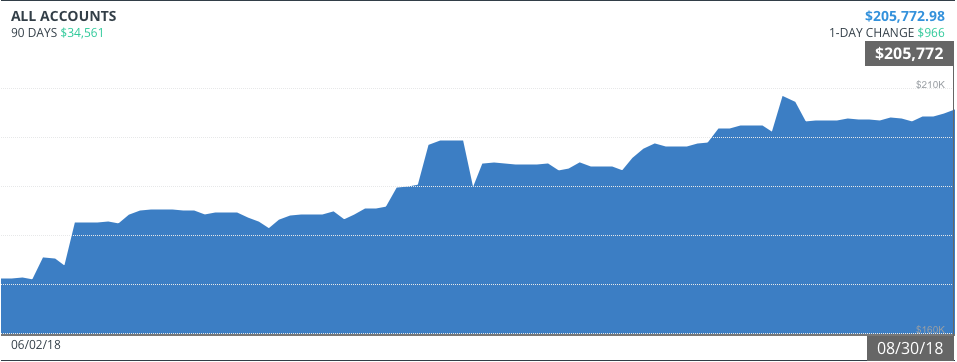
College
While in the Air National Guard, I ended up working shift work for the next six years (and counting) as well as being called to Active Duty. This was a huge benefit for my plans of going to college. What this allowed me to do was work from 11 pm to 8 am and then go to class for the day. I was also Paid To Attend College!
Working the overnight shift has a lot of tradeoffs. One’s sleep schedule is completely reversed by sleeping in the evening and staying up at night. This also meant that some days I went on zero sleep because life happens. I had to pre-plan everything from oil changes, to grocery runs, to doctor visits, etc.
This also meant that my G.I. Bill increased from $362 a month to $686 a month. How this worked in the past (ended in 2015) was a program called REAP (Reserve Education Assistance Program). Once a Guard or Reserve member was placed on active duty orders, their education benefits would increase.
A guard member is usually on Chapter 1606 for the G.I. Bill and once activated, they are placed on Chapter 1607. What this also did for me was provide me a full-time paycheck with the military by being on active duty orders instead of a Guard drill paycheck.
In addition, I would receive a housing allowance of $750 a month. I took it a step further and found a co-worker to split the rent with. Our rent with utilities were $700 each month so that meant that we each pocketed $400 a month. I also received free health care by being on active duty!
While I was in school completing my bachelor’s degree, I was also finishing up my CCAF (Community College of The Air Force) degree. This simply is an associate’s degree in a one’s AFSC (Air Force Specialty Code), or his or her job with the Air Force.
To complete this associate’s degree, one must complete:
- Technical school
- Physical education
- Leadership, Management & Military Studies course (Airman Leadership School, NCO Academy or SNCO Academy)
- Five core classes consisting of speech, English, math, social science, and humanities.
2013 to 2016 was an extremely time-consuming period in my life. I started my bachelor’s degree in 2013 and graduated in 2016. After getting paid to attend college for three years, this might be the only time where I should have stayed in college for an extra year to get paid for one more year of attending classes.
I completed my associate’s degree and bachelor’s degree at the same time while working full time on the night shift. In addition, during this time, I was promoted to Staff Sergeant (E-5), changed from a Drill Status Guardsman (meaning one weekend a month) to Title 10 orders/Active Duty, to a Federal Technician position. Then I went from Federal Technician to Active Guard and Reserve (AGR). Finally, I was selected as an officer in the Air National Guard.
Once I became an officer, the first thing that I did with the extra income was max out my Thrift Savings Plan. I contribute $18,500 a year towards my Thrift Savings Plan and $5,500 towards my Roth IRA. I wanted to max out my TSP not only because of the tax advantages but also because I was afraid of lifestyle inflation. Setting aside this extra income from my promotion has helped me avoid lifestyle inflation by paying myself first. I haven’t seen a difference in my take-home pay since fully maximizing my TSP and Roth IRA.
Rental Property
In June of 2016, I purchased my first rental property. This was a huge step for me of buying a rental property before ever owning my own house. I bought one side of twin home and found tenants 8 hours later. I purchased the house before leaving for a year of Air Force training. I figured if my tenants signed a one year lease, I could move into the house when I got back from training.
I am cash-flowing $250-300 a month after expenses. My tenants also wanted to sign another year lease, I jumped on the opportunity. My plan is to purchase a duplex in the near future and live in one side and rent out the other.
By using rental property along with investments, I am setting myself up for financial independence.
Why of FI
So why continue to save? I love the idea of financial independence. Financial Independence is having enough income from investments, real estate, passive businesses etc. to pay your living expenses for the rest of your life.
For example, if your annual expenses are $40,000 you’re financially independent when your investments are $1,000,000.
Do you spend a little more? $50,000 annual expenses? Then you need $1,125,000 invested.
Need a little less? $30,000 annual expenses? $750,000 invested.
I get it. You’re sitting there thinking this is too good to be true and are a little skeptical. How can I possibly save up that much money? This can be accomplished in many different ways such as investments, real estate income, and passive businesses, reducing expenses, and increasing income among others.
Another concept that I love is “retire early”. There is a movement called FIRE, which stands for Financial Independence Retire Early. However, I like to think of it as “FIOR”. Financial Independence Optional Retirement.
Once I have enough saved up, retirement is then optional for myself. I get to choose when or if I want to retire. I can pursue a passion project or start another career or even travel the world. Not for the money but for the passion and love.
With “FIOR”, I dictate my life, not money.
Net Worth
Within my net worth is my investments of: brokerage account, Roth IRA, Thrift Savings Plan, Savings & Checking account, rental property, my truck, and silver. (The below picture does not include the truck or silver values.)

I believe in paying yourself first. This is why I max out my Roth IRA and Thrift Savings Plan first. After I max out those two accounts, I put extra money into my brokerage account. In all of these accounts, I invest in low fee index funds.
As I see that I have extra money in my checking or savings accounts, I purchase American Silver Eagles to diversify my portfolio. I am currently at 500oz of silver invested. This is more of “play money” for myself. I have always loved collecting currency from around the world as I travel. This is a way for me to do that but also invest in my future.
Summary
I reached this net worth with a goal in mind – financial independence. I want to have freedom from money and the choice to do what I want with my life. Choosing to be deliberate with where my paycheck is allocated to is meaningful to me to live a better life.
If you are still reading this, my challenge to you is to start now with paying off any debt and start investing. Share my story with a high schooler or young adult. Get them started on the path to financial independence. Just teach them about money and how to live a better life.

Follow Our Journey At
We use Personal Capital to track our net worth. We simply connect our assets and it tracks everything for us! Our net worth, cash flow, budget, investment fees, retirement planner, and more are tracked through this site. It’s completely free too! Sign up for free and receive $20 when you open an account!

